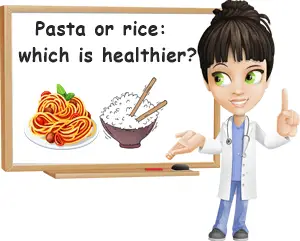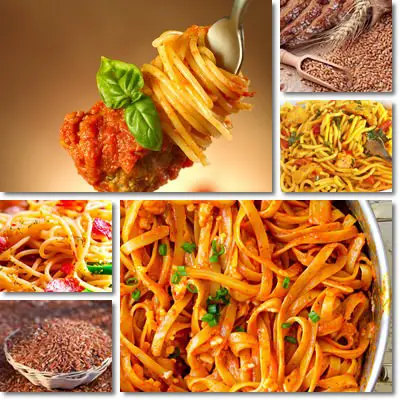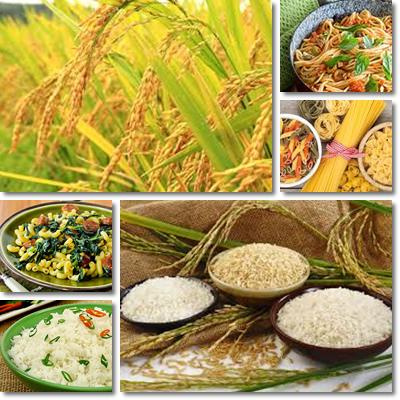There are people who say rice is superior to pasta from a nutritional point of view and people who fiercely advocate for eating pasta instead of rice.
In reality, there are advantages and disadvantages to eating both pasta and rice. Our current state of health, how we cook the rice or pasta, how much of each we eat, individual nutritional requirements and several other factors can influence how healthy they are for us.
Granted, neither is an ideal food, but both serve certain dietary purposes and contribute to our wellbeing to a certain extent.
When thinking about choosing between rice and pasta, we have to consider their properties as a whole and their impact on our health as individuals.
Calories, carbohydrate content, glycemic index, gluten presence, vitamin and dietary mineral content, cooking time, personal preference, reasons to include or exclude either of them in our diet, which may range from looking to lose weight, bulk up to increasing athletic performance or enjoying an energy boost, these are all reasons to consider when deciding between rice and pasta.

So which is healthier: rice or pasta?
Or, just as important, which is better for you: rice or pasta? These are questions only you can answer after carefully considering the following nutritional differences between rice and pasta and their potential health impact:
1) Glycemic index (Rice Vs Pasta)
This refers to how fast carbohydrates from the food we eat are converted into sugar by our body. Generally, foods with a low glycemic index are preferable because they ensure steady blood sugar levels, whereas foods with a high glycemic index may cause spikes and energy ups and lows.
The glycemic index is measured on a scale of 0 to 100, refined white sugar having the highest glycemic index (100). Short-grain white rice has a high glycemic index (over 70). Brown rice, basmati rice, wild rice have a medium glycemic index (higher than 55, lower than 70).
Whole grain pasta and white pasta both have a low glycemic index (a little over 40). Foods with a high glycemic index, such as white rice, tend to cause spikes in blood sugar levels and encourage type 2 diabetes and cardiovascular disease, hence the recommendation to avoid them.
2) Calorie content (Rice Vs Pasta)
On average, 100 g of uncooked rice (be it white rice, brown rice, red rice or purple or black rice) has about 360 kilocalories, while 100 g of cooked rice about 120-130 kcal.
This is because rice generally triples its size when cooked. White pasta (uncooked) has about 350-360 kcal per 100 g. Whole grain pasta (also uncooked) has about 350 kcal per 100 g.
Pasta tends to double its size when boiled, making us eat about half of the initial amount, so 100 g of cooked pasta equals about 175 kcal. So cooked rice has 30 to 40 less calories than the same amount of cooked pasta.
But when deciding whether to eat pasta or rice, we have to consider what other foods we pair them with.
Rice is often complimented by low-calorie options such as chicken, bell peppers, mushrooms, peas and so on, making it a great option from this point of view. Pasta is great paired with a variety of vegetables as well, from tomatoes and peppers to eggplants and zucchini, but is often prepared with oily sauces, ground beef or even pork, adding to the calories.

3) Type: refined or whole grain
Refined white rice and pasta both have the outer shells of their grains removed and thus have a significantly lower nutritional value and little to no health benefits. Brown rice, purple or black rice, red rice and whole grain pasta are somewhat healthier options because the grains retain all of their layers and the fiber, vitamins and dietary minerals in them.
Whole grains help counteract the health effects of a high glycemic index due to their higher fiber content, hence the reason why brown rice, for example, doesn’t cause spikes in blood sugar levels like white rice.
By retaining all of their nutrients, they contribute to better health overall, and, as research suggests, may help improve cardiovascular health and prevent diabetes, weight gain and obesity. In this case, it’s not really about choosing between pasta or rice, but between whole grain and refined. However, it is important to remember that whole grains may preserve some of the pesticides used on them in their outer shells.
4) Vitamins and dietary minerals
Both refined rice and refined pasta have a significantly lower vitamin and dietary mineral content than their whole grain versions and thus, very few health benefits. Whole grain pasta or brown, red or purple rice have a higher, yet similar nutritional value. Purple and red rice also contain powerful antioxidants.
To compare, here are the nutritional values for 100 g of cooked brown rice and 100 g of cooked whole wheat pasta:
100 g of cooked brown rice:
(Calcium) 3 mg – 13 mg
(Iron) 0.56 mg – 1.72 mg
((Magnesium) 39 mg – 54 mg
(Phosphorus) 103 mg – 127 mg
(Potassium) 86 mg – 96 mg
(Sodium) 4 mg – 4 mg
(Zinc) 1.71 mg – 1.34 mg
100 g of cooked whole wheat pasta:
(Vitamin B1) 0.178 mg – 0.156 mg
(Vitamin B2) 0.069 mg – 0.099 mg
(Vitamin B3) 2.561 mg – 3.126 mg
(Vitamin B6) 0.123 mg – 0.093 mg
(Vitamin B9) 9 mcg – 21 mcg (micrograms)
(Vitamin E) 0.17 mg – 0.23 mg
(Vitamin K) 0.02 mcg – 0.06 mcg
5) Gluten content
Gluten is the name for a protein found in the seeds of true grains such as wheat, rye, triticale, barley or spelt. Gluten gives bread and baked goods their flexible, chewy consistency and helps flours rise beautifully during baking. However, many people experience a sort of gastrointestinal adverse reaction when eating gluten foods such as pasta and can develop an auto-immune response to the grains.
Depending on the severity of their reaction, the condition may be either gluten sensitivity or gluten intolerance. Being intolerant of gluten means your body will develop symptoms of a gastrointestinal allergic reaction such as bloating, inflammation, diarrhea, poorly formed stools, abdominal pain, malabsorption problems and an increased risk for more serious outcomes.
In this respect, rice is better than regular pasta because it’s gluten free. However, gluten-free pasta exists as well.

6) Arsenic content in rice
Because of its gluten content, pasta is a problematic food for some people. However, certain types of rice may pose health risks because of their arsenic content.
Rice grown on former cotton fields or on fields where arsenic-based pesticides were used generally has a higher content of this carcinogen. Certain varieties have a higher content naturally.
For instance, brown rice retains more of this it than white rice because it is not refined and thus contains all of its seed coats. In this respect, regular consumption is especially problematic for children and similar high risk categories of people.
7) Level of satiation
In this respect, rice and pasta are not that different, but rather similarly satiating. As a personal note, whenever I have pasta, I tend to eat too much of it, not only because I find it delicious, but also because it doesn’t make me feel satiated as soon as rice does.
Instead, I rarely eat too much rice because it somehow curbs my hunger faster and I always stop eating long before I fell full. So while they both keep me full for 3 to 4 hours or more, pasta is too delicious to resist and resume to one serving.
8) Cooking options and cooking time
Some people find cooking rice is problematic because it can stick to the pan and thus needs constant attention, whilst pasta just needs to be put in hot water. While white rice boils almost as fast as pasta, 10-15 minutes, brown rice can take up to 45 minutes to boil. Then there is the issue of what foods compliment each of them, making the choice between pasta and rice a matter of time and preference as well.
9) Existing health issues
Pasta might be problematic for people with celiac disease, irritable bowel syndrome or gluten sensitivity, wheat allergy etc. White rice may be problematic for people suffering from chronic constipation, hemorrhoids, obesity, diabetes, high blood sugar levels. Any existing health issue should be taken into account when deciding between rice and pasta.
10) Personal preference: volume and taste
Most people find it hard to transport pasta to the workplace or any other place, for that matter. Pasta is generally more voluminous and can take a lot of space in the lunch box, whilst rice only takes up very little space for the same amount. Also, I find rice is still good cold and reheated, but pasta tastes best only when it’s freshly cooked. If left for more than half an hour, it tends to dry out, become hard and the sauce looses it flavor and soft consistency. Not even reheating it can bring back its flavor.
Conclusion
Choosing between rice and pasta is a matter of dietary purpose. For example, white rice may not do much for us nutritionally, but it is ideal for treating diarrhea. White pasta is great for when we experience nausea or vomiting because of its bland taste.
Red and purple rice are rich in antioxidants we can benefit from, while brown rice and whole wheat pasta have more dietary fiber, vitamins and dietary minerals than their refined varieties.
Their fiber content, for example, makes them ideal for regulating intestinal transit, helping us lose some weight, preventing blood sugar spikes, fluctuating energy levels and keeping us satiated longer.
Rice is a better option than pasta for people suffering from gluten sensitivity, intolerance or celiac disease, but pasta is a better option for diabetics because of its lower glycemic index.
Both are rich in energy-supplying carbohydrates, needed for intense physical exercise, but eating too much can cause our energy levels to fluctuate greatly and even encourage weight gain. It’s really up to us to decide which of the two, pasta or rice, is better for us based on our individual nutritional demands and dietary needs.
